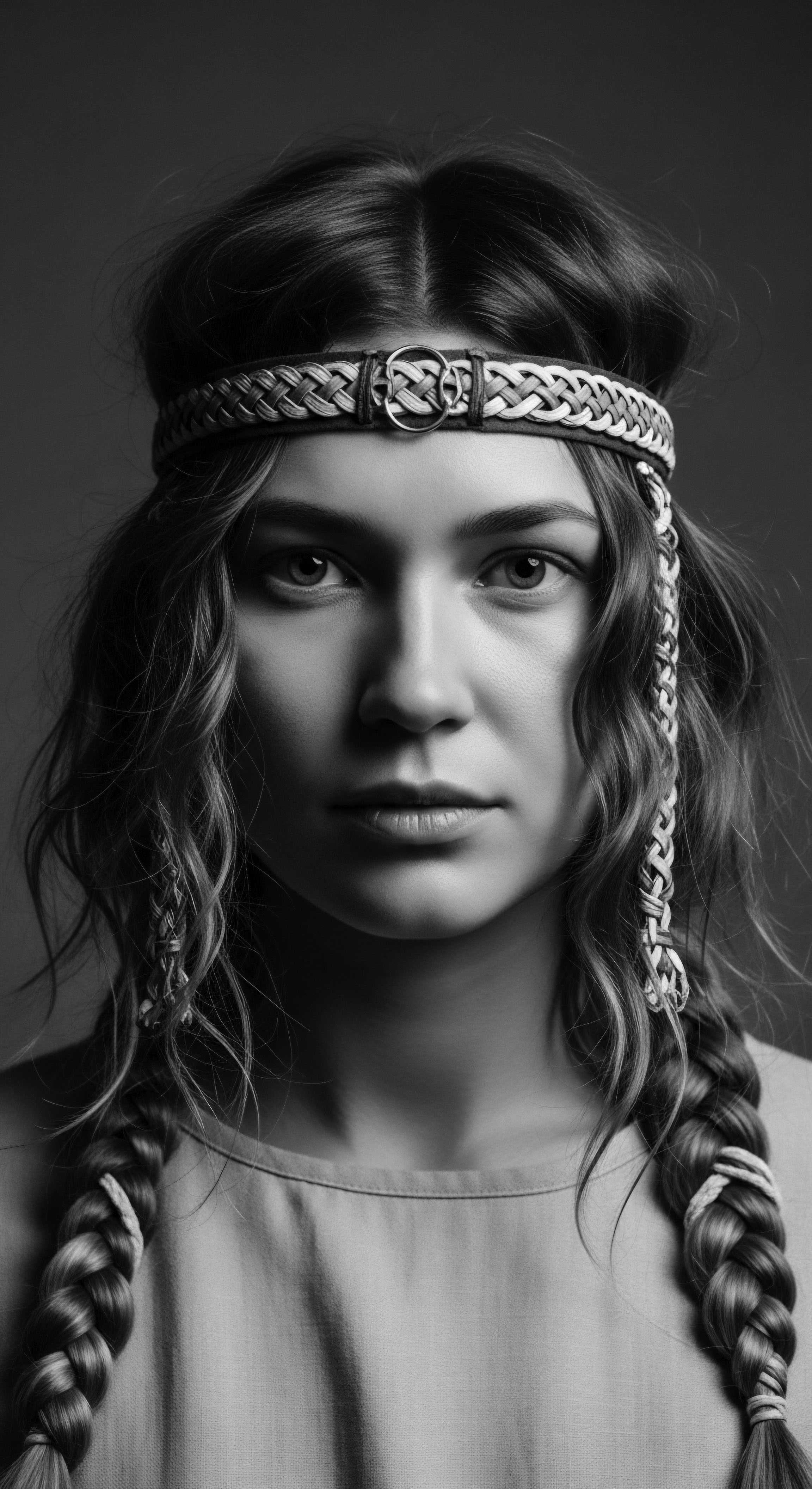
Roots
In the quiet contemplation of a single strand of hair, we find not merely keratin and pigment, but the echoes of millennia, a living archive whispered across generations. For those of us whose lineage carries the coils, kinks, and waves of textured hair, this connection reaches back to the very cradle of civilization, to the sun-kissed lands of ancient Kemet. It was there, along the life-giving Nile, that hair was more than adornment; it was a profound symbol, a potent conduit of identity, status, and spirit. To understand how ancient Egyptians styled their hair is to trace a path through the very soul of ancestral wisdom, discovering practices that resonate still within our communal memory.
The journey to comprehend the relationship between ancient Egyptian hair practices and textured hair heritage begins with the foundational understanding of the hair itself. Our ancestors possessed a deep, intuitive grasp of their own tresses, a knowledge honed through centuries of observation and interaction with the desert environment. They knew hair was a living fiber, responding to care and neglect, to the climate’s embrace and its harsh demands.
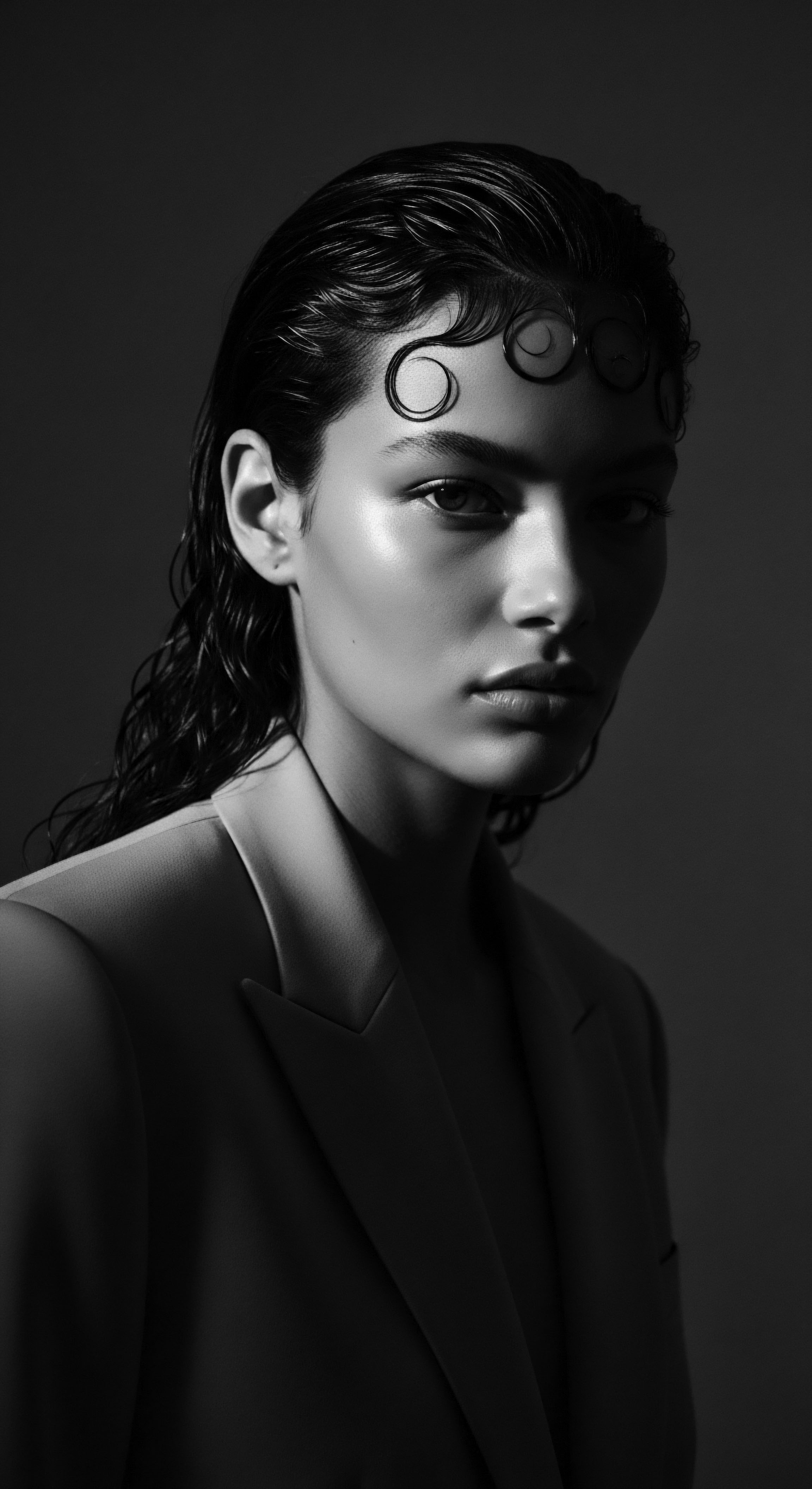
What Were the Foundational Understandings of Hair Anatomy?
While ancient Egyptians lacked microscopes to see cellular structures, their practices suggest an experiential understanding of hair’s needs. They recognized hair as an extension of the body, a living entity that demanded respect and maintenance. This holistic perspective, where the physical form was deeply intertwined with spiritual well-being, guided their approach to hair care. The very act of grooming became a ritual, a connection to inner balance and outward presentation.
Consider the structure of textured hair, often characterized by its unique elliptical cross-section and the coiling pattern of its cuticle layers. This architectural marvel, while robust, also presents specific needs for moisture retention and protection. The ancient Egyptians, facing an arid climate, instinctively gravitated towards practices that addressed these fundamental biological requirements.
Their use of rich emollients and protective styles speaks to an inherited wisdom that predates modern trichology. This deep understanding, passed down through the ages, laid the groundwork for many care rituals still recognized today for textured strands.
Ancient Egyptian hair practices offer a profound reflection of their understanding of hair as a living, sacred extension of the self.

Ancestral Categorizations of Hair Textures?
The visual representations left behind on tomb walls and in statuary often depict a variety of hair presentations, from closely cropped styles to voluminous, intricately braided coiffures. While specific ancient Egyptian classification systems for hair textures comparable to modern typologies (like the Andre Walker system) are not explicit in extant texts, their styling choices imply a recognition of different hair types. They worked with the hair they possessed, be it tightly coiled, wavy, or straight, adapting techniques and products to suit the inherent nature of each individual’s crown.
The prevalence of wigs, often crafted from human hair and plant fibers, also suggests a desire for uniformity or a stylistic ideal that could transcend natural variations. Yet, even in these constructed forms, the braiding and coiling methods frequently mirror patterns characteristic of textured hair, a testament to the aesthetic value placed on such forms.
- Human Hair ❉ Often braided into numerous small plaits for wig construction.
- Plant Fibers ❉ Incorporated into wigs for fullness and structure.
- Sheep’s Wool ❉ Utilized in early hair extensions for added thickness.
This attention to detail in crafting hairpieces, sometimes weighing up to 3 kilograms (Marshall, 2025), demonstrates an appreciation for density and volume, qualities inherent in many textured hair types. The sheer labor involved in creating such elaborate wigs, with one New Kingdom wig from the British Museum containing 300 strands, each with 400 hairs, coated in resin and beeswax, underscores the high cultural value placed on hair presentation.

Historical Environmental Factors Shaping Hair Care?
The harsh Egyptian climate, with its intense sun and ever-present sand, necessitated robust hair care and styling strategies. Sunlight can be particularly drying to textured hair, and the need for protection was paramount. Shaving the head, a common practice for priests for ritual purity and cleanliness, also offered relief from the heat and protection from lice. For those who retained their hair, or wore wigs, protective measures were key.
Ointments and oils, derived from plants and animal fats, served as both conditioning agents and sunscreens. These practices, born of environmental necessity, fostered a deep reservoir of knowledge concerning natural ingredients and their benefits for hair health.
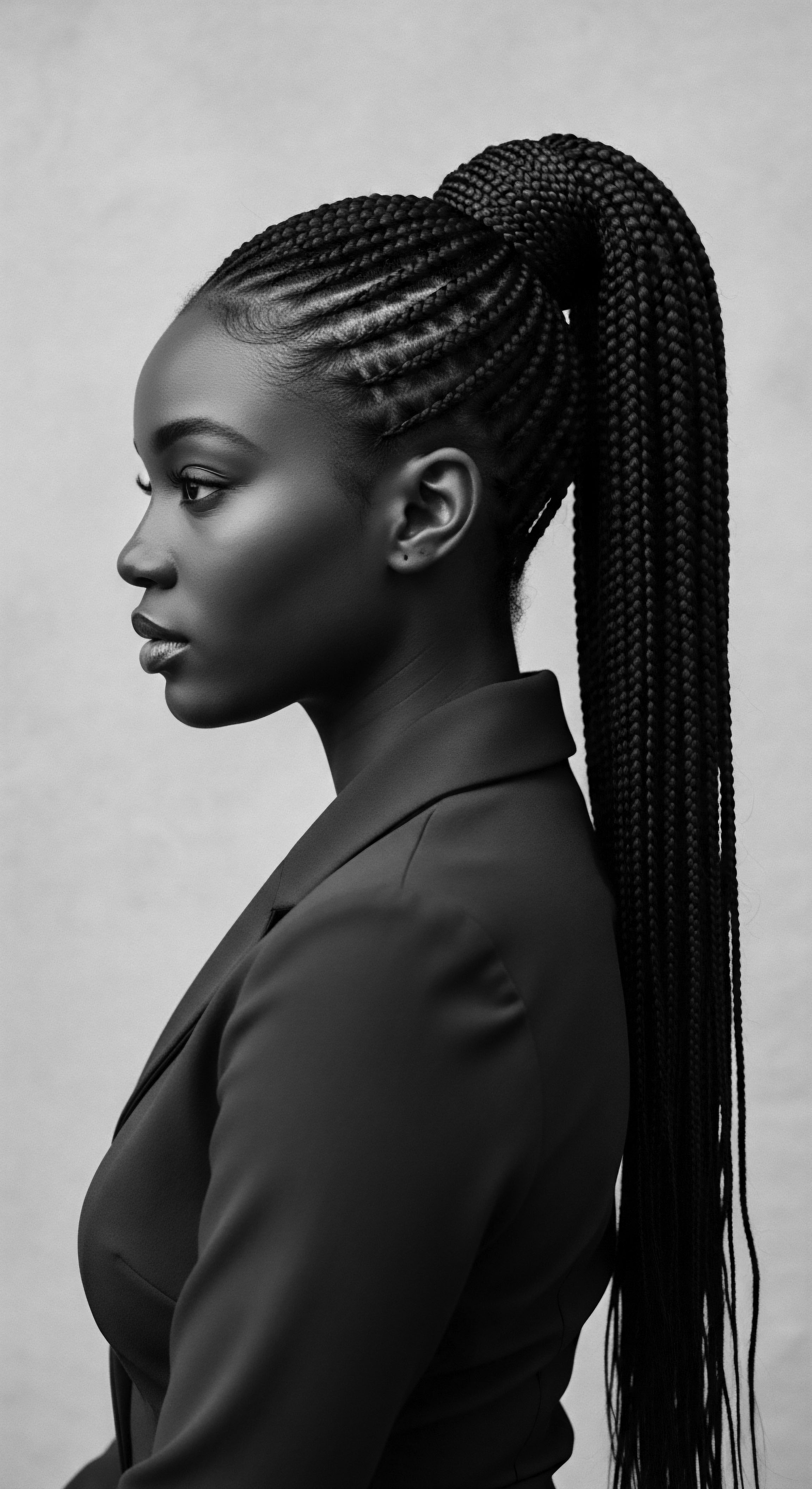
Ritual
The hand that braids, the palm that anoints, the gesture of adornment—these are the tender threads that connect us to the ancestral rituals of care. In ancient Egypt, hair styling transcended mere personal grooming. It was a potent expression of social standing, religious piety, and the very connection to the divine. The artistry applied to hair was a ritual, a deliberate act of honoring the self and one’s place within the cosmic order, reflecting profound respect for the heritage of self-presentation.

How Did Ancient Egyptians Incorporate Hair Care Into Daily Life?
The rhythm of daily life along the Nile included meticulous attention to hair. Archaeological discoveries consistently reveal combs, hairpins, and mirrors within tombs, indicating the importance of hair and hairstyling in both life and the afterlife. Far from being a mere aesthetic pursuit, cleanliness was a foundational principle. The dry climate and the presence of lice meant that hygienic practices were critical.
Many Egyptians, particularly priests, often shaved their heads to maintain ritual purity and avoid infestations. For those who kept their hair, or wore wigs, regular washing and scenting with oils were customary.
The remnants of ancient Egyptian hair care products, such as the fat-based ‘gel’ discovered on mummified hair samples, reveal a sophisticated understanding of styling principles. Researchers, including Natalie McCreesh of the University of Manchester, found that this substance, containing biological long-chain fatty acids like palmitic and stearic acid, served to keep hairstyles in place during life and even in death, highlighting their enduring commitment to personal presentation (McCreesh, 2011). This finding underscores a shared human desire across millennia to define and present one’s image through hair, a practice echoing through our own textured hair styling practices today, which also prioritize hold and longevity.
| Ancient Egyptian Practice Head Shaving for Purity |
| Heritage Connection / Modern Parallel A practice reflecting deep spiritual connection, resonating with contemporary choices for low-maintenance, clean-cut styles and the pursuit of inner calm. |
| Ancient Egyptian Practice Wig and Extension Usage |
| Heritage Connection / Modern Parallel Ancestral forms of protective styling and adornment, directly paralleling modern wigs, weaves, and extensions for versatility and hair health. |
| Ancient Egyptian Practice Fat-Based Styling Agents |
| Heritage Connection / Modern Parallel Early forms of natural hair products, akin to modern butter, balms, and gels used to define and hold textured styles. |
| Ancient Egyptian Practice Hair Oiling and Masking |
| Heritage Connection / Modern Parallel Deeply rooted in ancestral wellness traditions, a direct precursor to today's pre-poo treatments, hot oil treatments, and restorative hair masks. |
| Ancient Egyptian Practice These ancient rituals testify to a timeless pursuit of hair well-being and expression, forming a vital part of our shared hair heritage. |
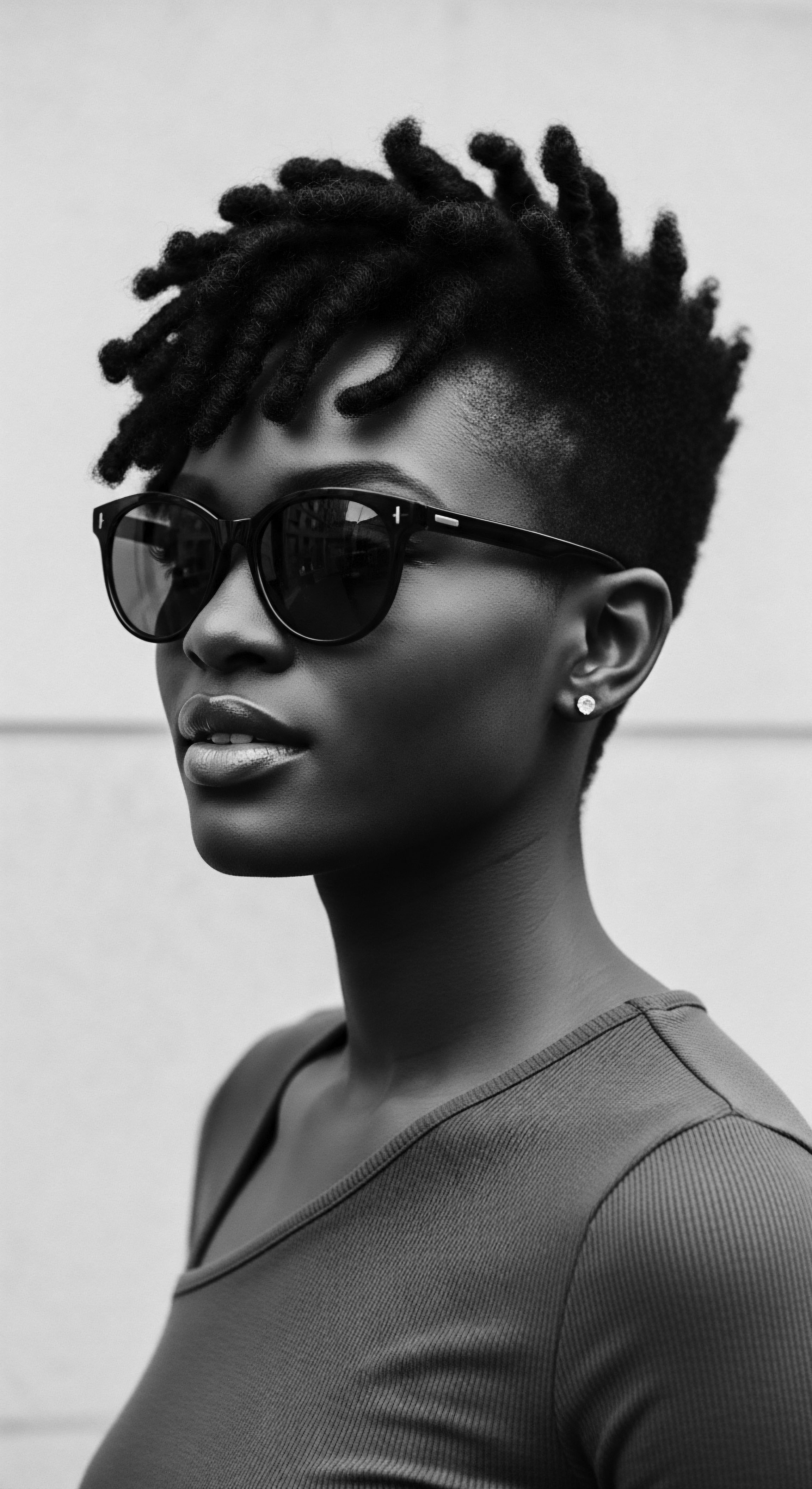
What Were the Ancestral Roots of Protective Styling?
Protective styling, a cornerstone of textured hair care today, finds deep roots in ancient Egypt. Wigs and hair extensions were not simply fashion statements; they offered practical benefits. Wigs, often meticulously braided from human hair, protected the scalp from the intense sun and shielded natural hair from dust and lice.
This ingenious solution allowed for elaborate coiffures while preserving underlying hair health. The earliest documented use of hair extensions dates back to approximately 3400 BC in ancient Egypt, with evidence showing sheep’s wool braided into hair for added thickness, marking a very early form of hair augmentation.
Beyond wigs, representations show natural hair styled in plaits and braids, techniques that inherently protect the hair shaft from environmental damage and manipulation. Children, for instance, often had their heads shaved except for a “sidelock of youth,” a single braid worn on one side, which symbolized their childhood and connection to the god Horus. This stylistic choice also offered a degree of protection to the remaining hair. The artistry involved in these styles, whether natural or augmented, speaks to a heritage of creativity and care that continues to define textured hair communities.

How Were Wigs and Extensions Employed in Ancient Egyptian Society?
Wigs and hair extensions held significant social and cultural weight in ancient Egypt. They signaled gender, age, and social status. Elite men and women, including pharaohs and queens, wore elaborate wigs as markers of their wealth and prestige.
These wigs, often made of human hair, were labor-intensive to create, making them a luxury item. The use of beeswax and animal fat to set and maintain these intricate styles is also well-documented.
The practice extended beyond the living, with wigs and hair extensions frequently included in funerary contexts, ensuring the deceased appeared their best in the afterlife. This reflects a belief that the individual’s appearance, including their hair, was integral to their being, both in this world and the next. The continuity of hair adornment from life to death underscores the profound cultural importance placed on these elements of personal presentation. The presence of artifacts like gold wig rings in the coffins of royalty further illustrates the value attached to these hair accessories.

Relay
The enduring legacy of ancient Egyptian hair practices flows like a mighty river, its currents reaching far beyond the sands of time to touch contemporary textured hair traditions. This profound connection is a testament to the resilience of ancestral knowledge, proving that methods born of ancient wisdom continue to shape our modern understanding of hair wellness. The relay of this heritage is seen in our tools, our ingredients, and our collective consciousness of hair as a powerful statement of self.
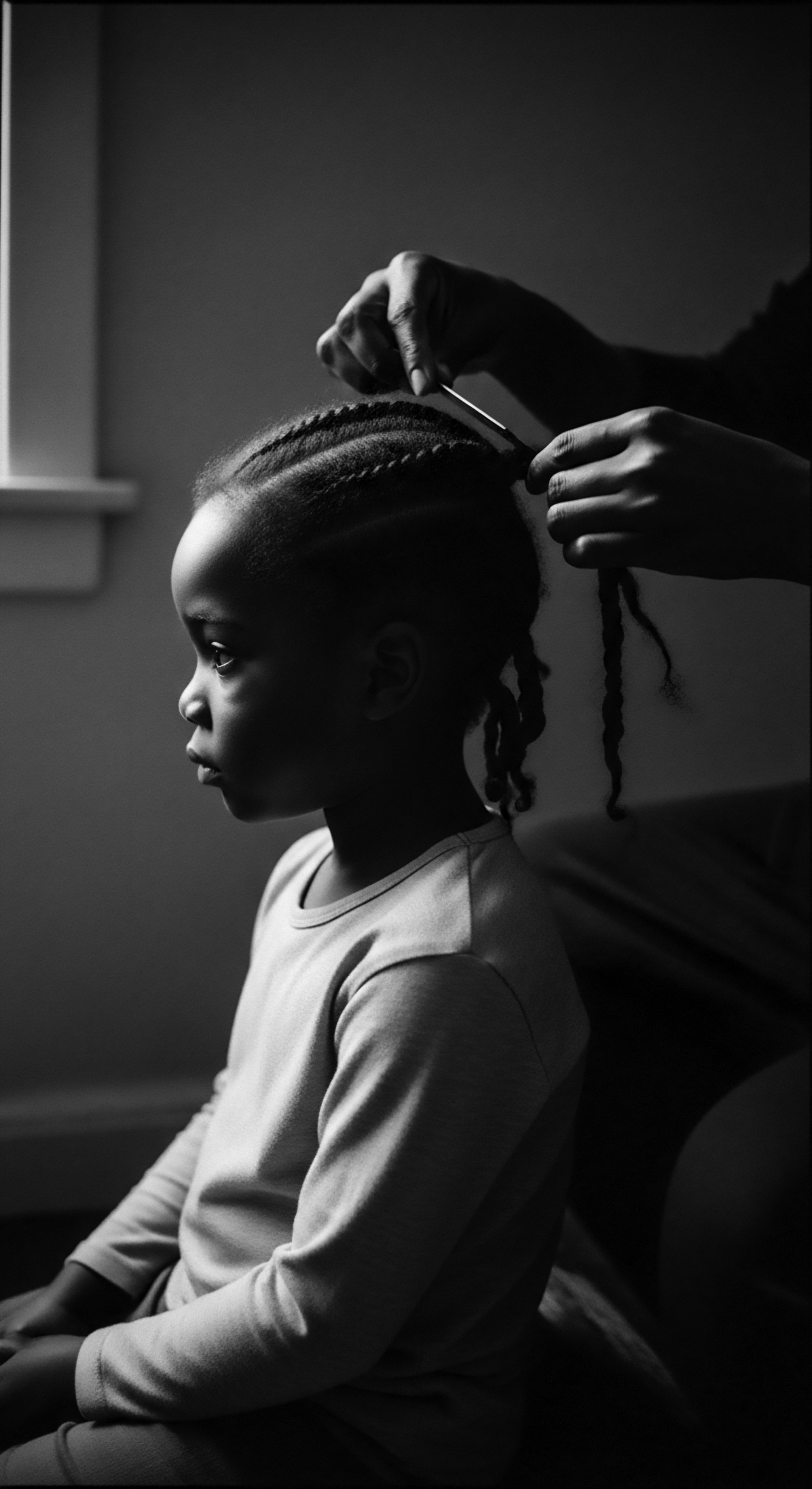
How Did Ancient Egyptian Tools and Techniques Foreshadow Modern Hair Care?
The ingenuity of ancient Egyptian hairstylists was truly remarkable, with their tools and techniques laying groundwork for many practices we recognize today. Combs, fashioned from wood or bone, were commonplace, some with fine craftsmanship and long grips. These were essential for detangling and distributing emollients. Hairpins, dating as early as 4000 BC, secured long hair, often in elaborate updos.
The discovery of bronze curling tongs suggests early adoption of heat styling, likely used to achieve the popular curls and waves seen in artistic depictions. Such tools, though rudimentary by today’s standards, reveal a consistent human drive for styling versatility and aesthetic control.
The application of styling products also has ancient origins. Beyond the fat-based gels for holding styles, the Egyptians utilized beeswax and resin, heated and applied to set curls and braids. This meticulous approach to styling, often involving many hours, speaks to a dedication that mirrored the significance hair held in their society.
The very act of preparing the hair, whether for daily life or ceremonial events, embodied a ritual of care and intention. This foresight in creating tools and techniques that manipulated and secured hair remains a powerful thread in the tapestry of textured hair artistry.
- Combs ❉ Essential for detangling and product distribution, often crafted from wood or ivory.
- Hairpins ❉ Used since 4000 BC to secure intricate styles, sometimes made of precious metals.
- Curling Tongs ❉ Bronze implements heated to create waves and curls, a precursor to modern heat tools.
- Shavers ❉ Used for hair removal, evolving from stone blades to copper and bronze razors.
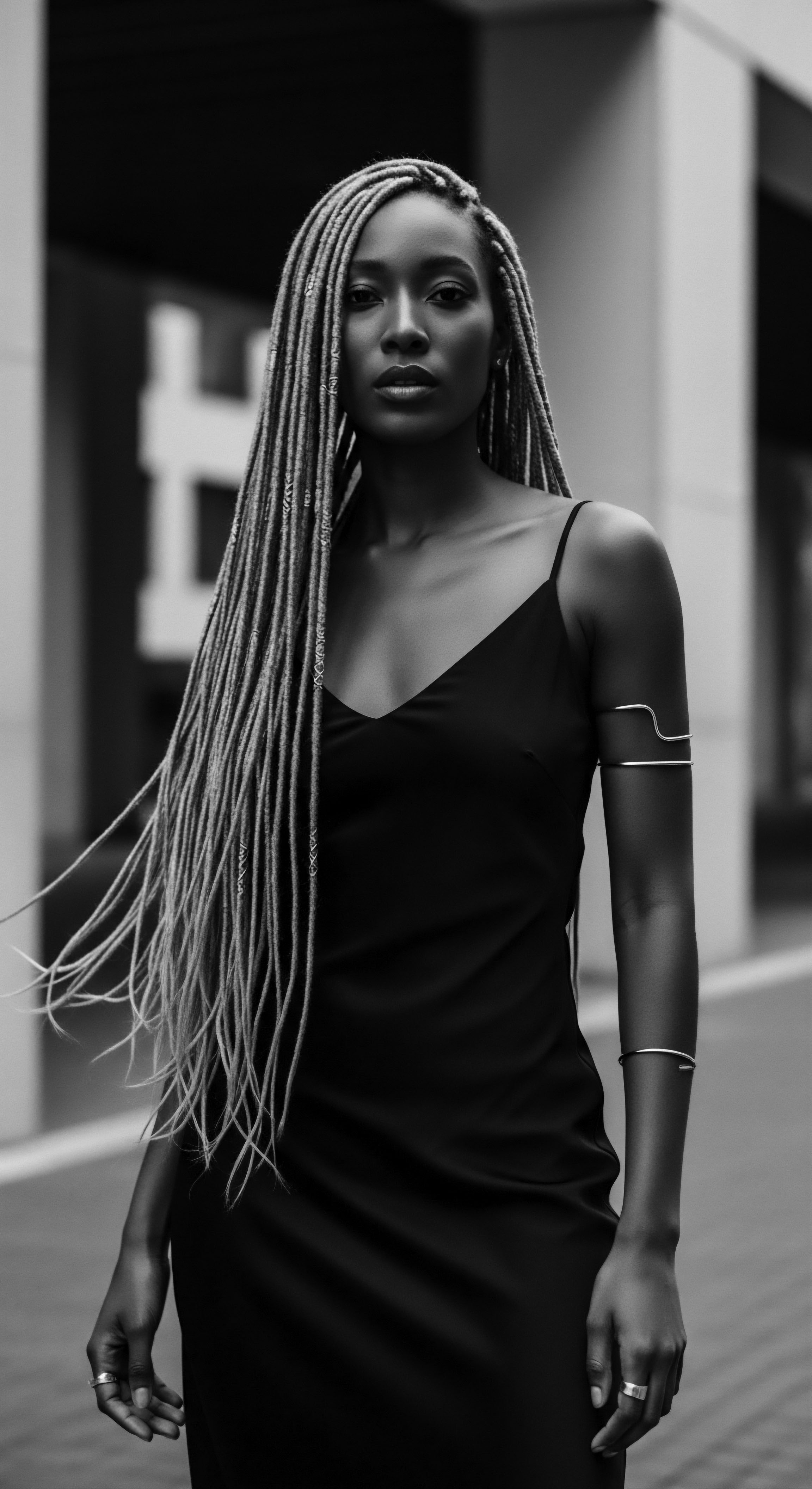
What is the Ancestral Basis for Hair Health and Problem Solving?
Ancient Egyptians approached hair health with a holistic perspective, acknowledging the connection between internal well-being and external presentation. They actively sought remedies for common hair concerns, including graying and baldness. While the effectiveness of some of their concoctions remains questionable, the survival of texts detailing these treatments underscores their deep concern for maintaining youthful, vibrant hair. For example, remedies for hair loss sometimes involved animal fats, from creatures like lions and hippopotami.
Their regimen extended to the prophylactic care of hair, recognizing that prevention was as crucial as treatment. This is evident in their use of wigs as a defense against lice, a widespread issue in ancient times. The dedication to cleanliness and preservation, even in death, reflects a comprehensive understanding of hair’s longevity and its role in the continuation of life. The preservation of Queen Tiye’s reddish-brown hair in her tomb, still remarkably intact, exemplifies the success of ancient preservation methods and a testament to their knowledge of hair’s properties (Tassie, 2010, p.
305). This commitment to hair preservation, even for mummies, suggests an understanding of hair’s resilience and its deep link to identity and memory.
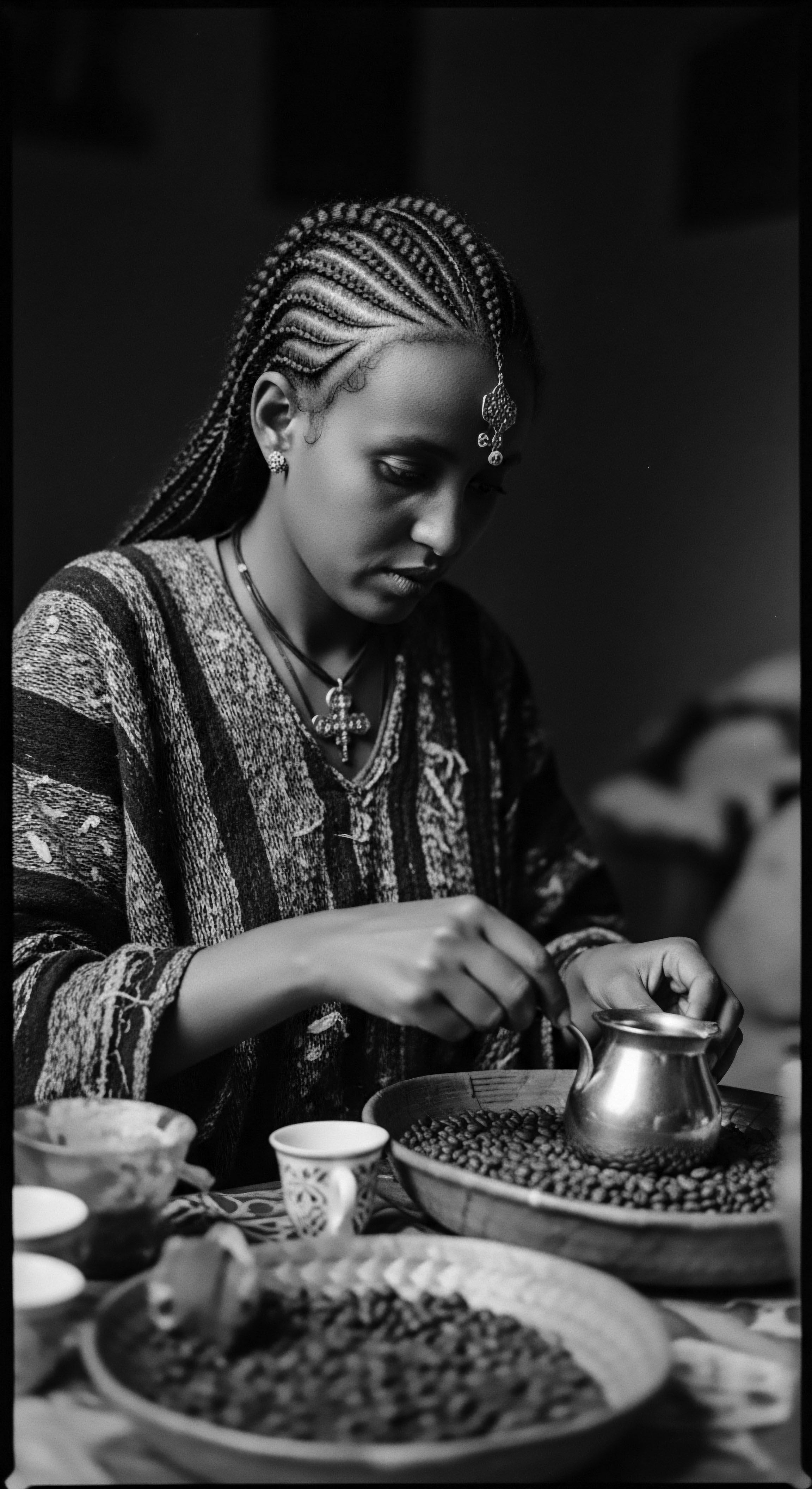
How Does Ancient Egyptian Hair Ritual Influence Identity and Community?
Hair in ancient Egypt was a powerful visual cue, communicating an individual’s identity, social standing, and role within the community. The specific hairstyles worn by men, women, and children differed, creating a visual language understood by all. Longer hair, for instance, could be emblematic of power and divinity, particularly for elite men.
Women across all social strata often wore long hair, perhaps connected to their perceived roles in procreation and fecundity. The iconic “sidelock of youth” for children served as a clear identifier of their age and innocence, a ritual marking their passage through life stages.
The act of seizing an enemy by the hair, a common depiction in royal art, symbolized complete domination and subjugation, a power that extended beyond mere physical control. This speaks to the perception of hair as a source of vitality and personal power, echoing beliefs found in many cultures across Africa and the diaspora. The collective understanding and adherence to these hair codes fostered a sense of communal identity, reinforcing social structures and shared values.
The meticulous attention to hair, whether natural or augmented, was a communal endeavor, often performed with the aid of hairdressers for the wealthy. This collective engagement with hair care establishes a heritage of community-based beauty practices, a thread that persists in salon culture and shared styling experiences within textured hair communities today.

Reflection
As we journey through the storied practices of ancient Egyptian hair styling, we are reminded that the ‘Soul of a Strand’ is an unending saga, a living, breathing archive of ancestral wisdom. The dedication to adornment, health, and spiritual connection woven into every braid, every coiled wig, and every carefully applied unguent speaks volumes about a civilization that deeply valued their physical and spiritual presence. Their understanding of hair as a conduit of power, status, and identity resonates profoundly within our own textured hair heritage, echoing the narratives of resilience, creativity, and self-definition that define Black and mixed-race experiences globally.
The threads of ancient Egyptian hair culture are not relics confined to museum displays; they are vital parts of a continuous legacy. The protective styles, the use of natural ingredients, the communal rituals of grooming—these are ancestral whispers guiding our contemporary practices. They remind us that the beauty and strength of textured hair are not recent discoveries, but rather timeless truths, passed down through the ingenuity and devotion of those who came before. In honoring the practices of ancient Kemet, we pay homage to a heritage that continues to inspire, inform, and elevate our understanding of hair as a sacred extension of self.

References
- Marshall, A. (2025). The magic and power of hair in ancient Egypt. Ancient Egypt, (147).
- Tassie, G. J. (2010). The Social and Ritual Contextualisation of Ancient Egyptian Hair and Hairstyles from the Protodynastic to the End of the Old Kingdom (Doctoral dissertation, UCL).
- McCreesh, N. (2011). Ancient Egyptians used ‘hair gel’. Nature Middle East.
- Fletcher, J. & Salamone, F. (2016). An Ancient Egyptian Wig ❉ Construction and Reconstruction. Internet Archaeology, (42).
- Marshall, A. (2024). Role of the Hair in Ancient Egypt. ResearchGate.
- Hagele, L. (2022). Ancient Egypt’s Most Indulgent Beauty Secrets. TheCollector.
- The Hair Alchemist. (2021). The History of Wigs & Hair Extensions.
- World History Edu. (2023). What hairstyles did the ancient Egyptians maintain?
- Totnes Fashion & Textiles Museum. (n.d.). Hair and Wigs in Ancient Egypt.
- Marshall, A. (2024). Headdresses, Hairstyles, and Wigs in Ancient Egypt. Historicaleve.
- Rthvi. (2024). Exploring Ancient Hair Care Rituals ❉ Timeless Practices for Modern Hair Wellness.
